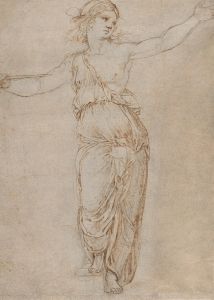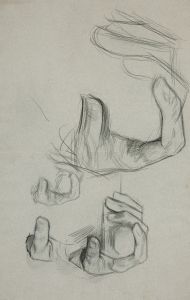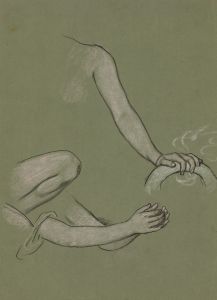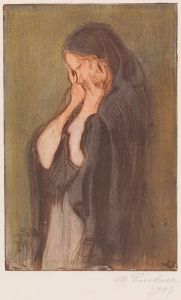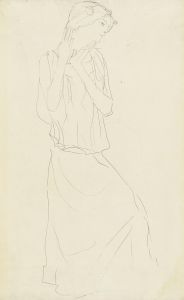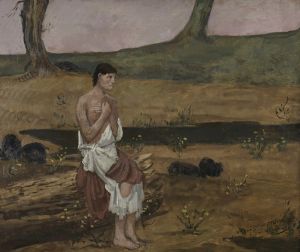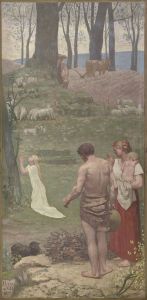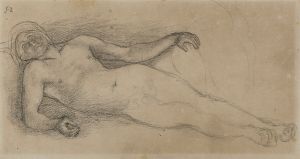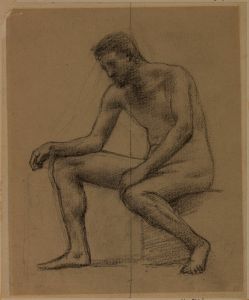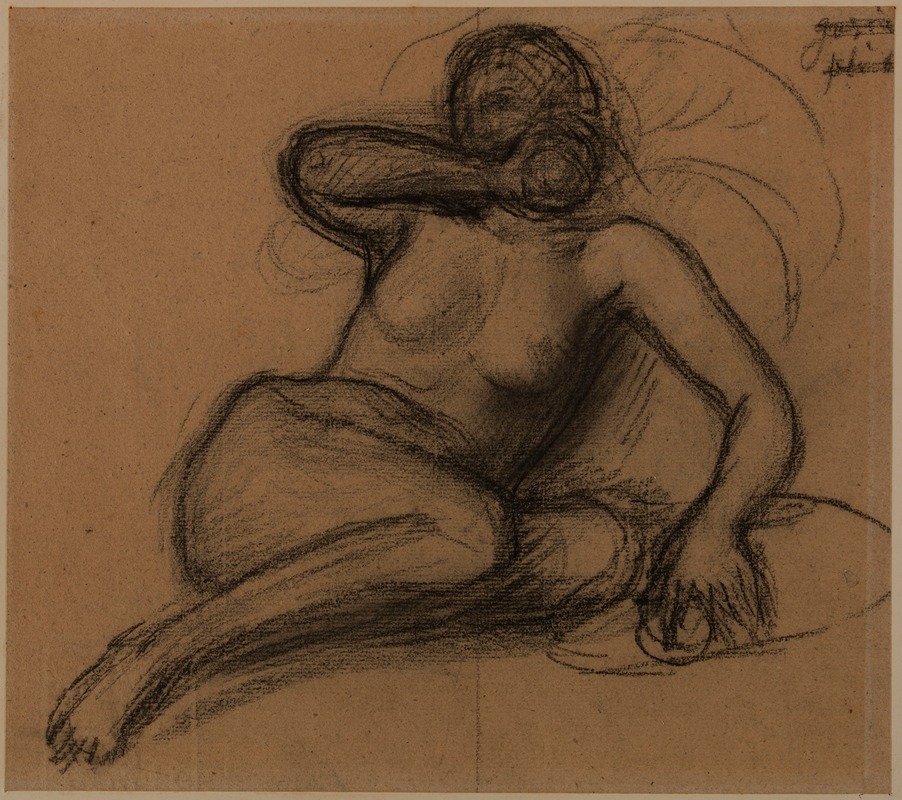
Femme nue, à demi-étendue
A hand-painted replica of Pierre Puvis de Chavannes’s masterpiece Femme nue, à demi-étendue, meticulously crafted by professional artists to capture the true essence of the original. Each piece is created with museum-quality canvas and rare mineral pigments, carefully painted by experienced artists with delicate brushstrokes and rich, layered colors to perfectly recreate the texture of the original artwork. Unlike machine-printed reproductions, this hand-painted version brings the painting to life, infused with the artist’s emotions and skill in every stroke. Whether for personal collection or home decoration, it instantly elevates the artistic atmosphere of any space.
Pierre Puvis de Chavannes was a notable French painter of the 19th century, renowned for his mural paintings and his influence on the Symbolist movement. One of his works, "Femme nue, à demi-étendue," which translates to "Nude Woman, Half-Reclining," exemplifies his unique style and thematic interests.
Puvis de Chavannes was born on December 14, 1824, in Lyon, France. He initially pursued a career in engineering but later shifted his focus to art, studying under various artists, including Eugène Delacroix. He developed a distinctive style characterized by its muted color palette, simplified forms, and serene compositions. His works often depicted allegorical and mythological themes, reflecting his interest in classical antiquity and idealized human forms.
"Femme nue, à demi-étendue" is a painting that captures Puvis de Chavannes's approach to the human figure and his ability to convey a sense of calm and timelessness. The painting features a nude woman in a half-reclining pose, a subject that aligns with the artist's frequent exploration of the human body in its natural state. The composition is likely marked by the artist's typical use of soft, harmonious colors and a balanced arrangement, creating a tranquil and contemplative atmosphere.
Puvis de Chavannes's work was influential during his lifetime and continued to impact artists and movements that followed. His emphasis on harmony, simplicity, and the symbolic use of figures resonated with the Symbolist artists of the late 19th and early 20th centuries. His murals, in particular, were celebrated for their integration with architectural spaces, enhancing the environments they adorned.
While specific details about "Femme nue, à demi-étendue" may not be as widely documented as some of his larger mural projects, the painting nonetheless reflects the core elements of Puvis de Chavannes's artistic philosophy. His works often eschewed the dramatic and the detailed in favor of a more restrained and idealized representation, inviting viewers to engage with the underlying themes and emotions rather than the specifics of the scene.
Puvis de Chavannes's legacy is evident in the way he bridged the gap between traditional academic painting and the emerging modernist movements. His influence extended beyond France, impacting artists across Europe and contributing to the development of modern art. His ability to convey profound meaning through simplicity and his dedication to creating art that transcended the immediate and the literal made him a pivotal figure in the transition from 19th-century art to the innovations of the 20th century.
In summary, "Femme nue, à demi-étendue" is a testament to Pierre Puvis de Chavannes's mastery of form and his commitment to exploring the timeless beauty of the human figure. Through his work, he left an indelible mark on the art world, inspiring generations of artists to seek beauty and meaning beyond the surface.





